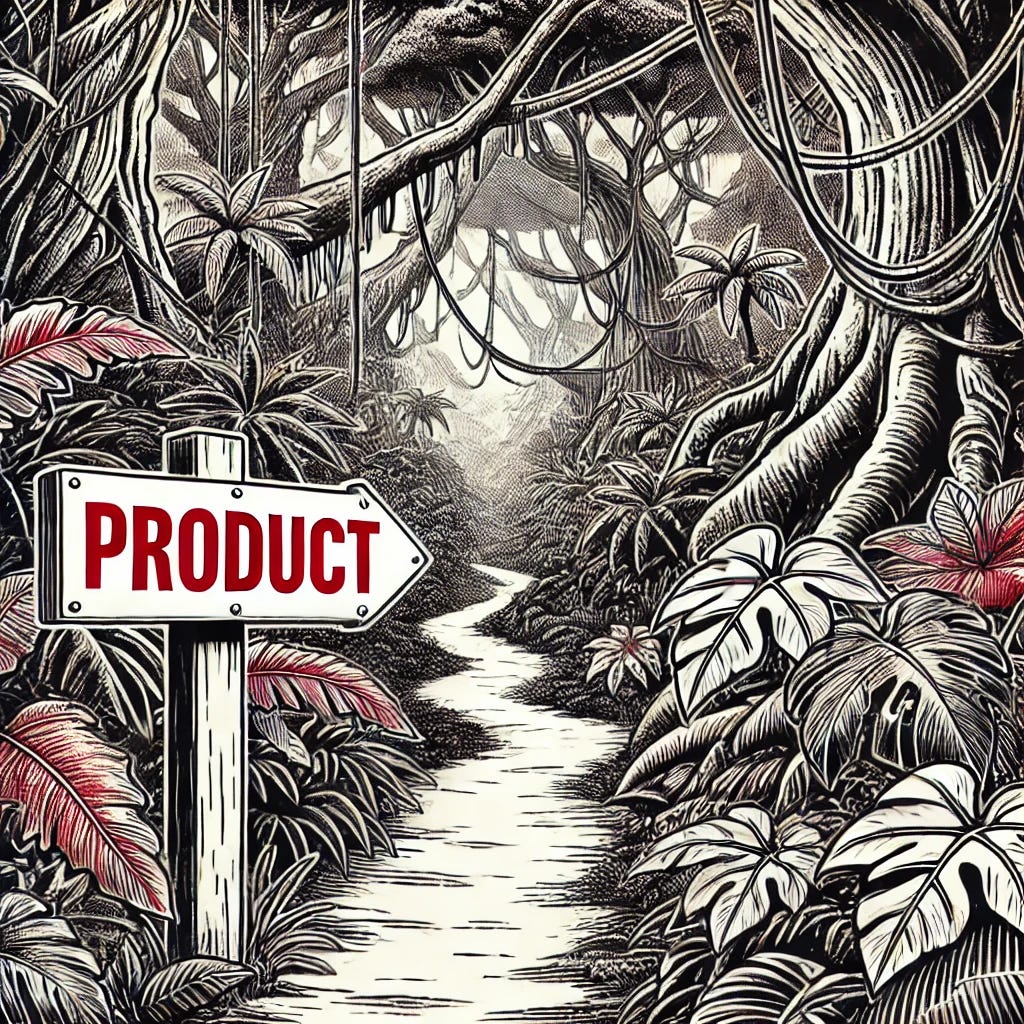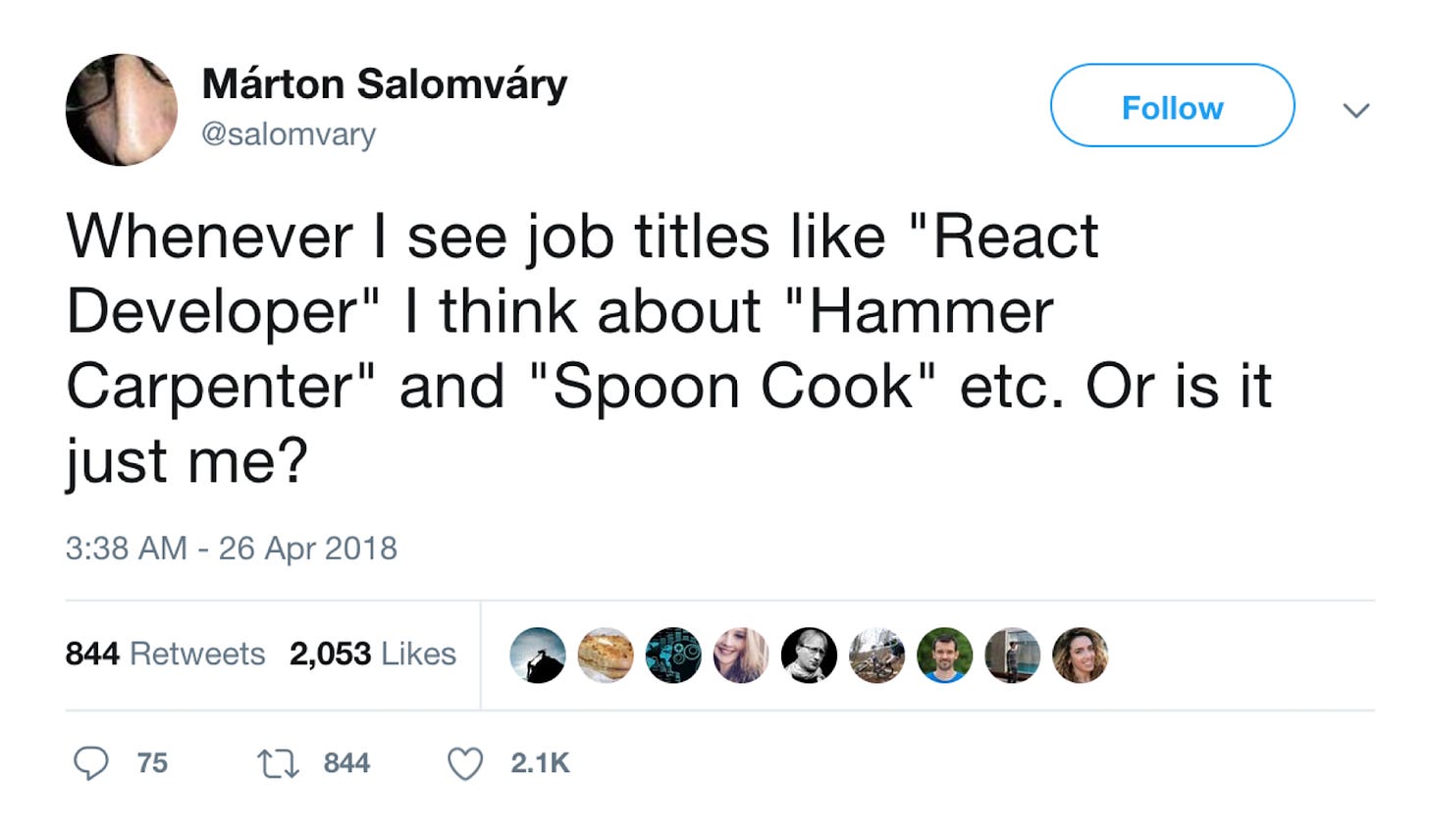What Product-led Means to Engineering
Exploring the differences between project- and product-based engineers.
When folks talk about a company being "product-led," we often hear how it changes things for finance, portfolio management, and product management. But we rarely discuss what it means for the engineers who build the product. And let me tell you, the impact on engineering teams is huge and shouldn’t be overlooked.
Finding Identity in Product-led Engineering
Let’s start with something simple. Ask an engineer at your company, “What do you do here?” You might hear, “I’m a Go developer,” or “I’m a frontend dev,” or maybe even, “I’m on a Scrum team.” What they’re really telling you is what they’re bonded to—whether it’s a programming language, a part of the tech stack, or even the process they follow to get their work done. They identify with the “how.”
But here’s the thing: you'd hear something different in a truly product-led company. Engineers would say, “I work on small business bond policies,” or “I work on the search team.” They’d primarily identify with the product they’re helping to build, not just the tools or processes they use.
This difference might sound small, but it’s a big deal. When engineers identify with the product they’re working on, it signals that they’re more invested in the success of that product and its users. They see themselves as part of something bigger than just writing code—they’re helping to put something into the world that real people will use.
Asking “What do you do here?” is a quick way to test whether your company is product-led. Go on and try it. Ask your engineers what they do and see if they talk about the product or just the tools.
Purpose and Impact: The Real Payoff of Being Product-led
One of the upsides of being product-led is the connection it creates between engineers and the people who use the product. When jumping from project to project, you don’t always get to see the long-term impact of your work. But when working on a product over time, you start to understand how it works, how it’s positioned in the market, and most importantly, how it’s helping people. You’re working closer to value, outcomes, purpose, and impacts. It’s easier to understand how your work moves the needle.
As a young engineer, I remember working in a traditional, project-led environment. We followed the waterfall method and had no real contact with the customers. I couldn’t see how what I was doing was making a difference. It was frustrating because I wanted to know that my work mattered.
After a while, I wasn’t content just writing code for the sake of it—I wanted to know how it was helping someone out there. This disconnect was a big reason I eventually left engineering for product management. If you can’t fix the problem from your current position, go somewhere where you can.
In a product-led company, engineers should never feel that disconnect. They should see firsthand how their work is making a difference. And as a result, they will be more motivated and engaged. They’re not just writing code—they’re solving problems for real people. Real people who appreciate their efforts, even if unattributed.
Better Decisions Through Product Knowledge
Here’s a red flag for me: when an engineer says, “Just tell me what to do, and I’ll do it.” That’s a sign that something’s gone wrong. Maybe they’ve been beaten down by the system. Or maybe they’ve just given up on trying to think for themselves. Either way, it’s bad news for everyone.
In a product-led organization, engineers must be part of the decision-making process. They need to know what the product is trying to achieve so they can make informed decisions every day. Engineers not only have to build things the right way, but they also have to build the right things. They’re making small decisions all the time—hundreds of them, just in how they write code. There is a compounding effect. They can't make the best choices if they don’t have the full picture and some skin in the game.
This isn’t about engineers stepping on the toes of product managers. It’s about everyone on the team sharing knowledge and working collectively to improve the product. The more engineers know about the product and the market, the better their decisions will be and the better the product will turn out.
Oh, and Product Managers, creating this environment takes a lot of pressure off of you. Many hands make light work.
Goodbye, Death Marches; Hello, Sustainable Development
Let’s talk about the dreaded “death march” for a minute.
Back in the day, when projects were managed with waterfall methods, we’d go through grueling, months-long pushes to get something out the door. It was all-hands-on-deck, working 12-hour days, weekends… the whole nine yards. Then, once the project was done, there’d be this big dip, where work slowed to a crawl until the next death march kicked off.
It was exhausting, and honestly, it didn’t lead to great results. Often, after all that hard work, we’d find out that we built the wrong thing. The market had moved on, or we’d misunderstood what customers needed. All that effort, and it didn’t even hit the mark.
These days, with agility and product-led development, things can be different. We’re not just throwing everything into one big project and hoping for the best. We’re working iteratively, releasing smaller changes more frequently, and responding to feedback as we go. This approach evens out the workload and helps us avoid those brutal peaks and valleys. Plus, we’re more likely to deliver something that works for our customers because we’re constantly testing and adjusting. Early value and feedback for the win!
Continuous Improvement: The Long View of Product-led Development
One of the biggest shifts in thinking that comes with being product-led is the idea of continuous improvement. In the old project-led world, we’d finish a project, pat ourselves on the back, and move on to the next one. But in a product-led world, the job isn’t done until the product reaches the end of life. For successful products, that can be a decade or even more. We’re always looking for ways to improve it, whether by fixing what’s broken, improving what’s already working, or adding something new.
The pattern of financing a project and moving the bits over to keep the lights on the team is a known recipe for generating technical debt. Unchecked, systems spiral toward crisis. There’s no incentive for engineers measured on time and budget to do the right thing, and there are no consequences to taking shortcuts to make the numbers.
This kind of longer-term thinking separates product-led organizations from the rest. It’s not just about getting something out the door—it’s about ensuring the product stays relevant and useful for as long as it’s in the market.
Bringing It All Together
So, what does it mean to be product-led in engineering?
Engineers are more than just code writers—they’re integral to the product team. They understand the purpose of what they’re building and are deeply connected to their product’s success. They feel ownership.
Engineers make better decisions because they have the information they need, and they work in a way that’s both sustainable for themselves and responsive to the market.
Product-led isn’t just a buzzword—it’s a way of working that brings out the best in your engineering team and delivers better customer results. It’s time we started talking more about what it means for the people who build the product, not just those who manage it. If we do that, we’ll see better outcomes for the product, the company, and, just as importantly, the engineers themselves.




